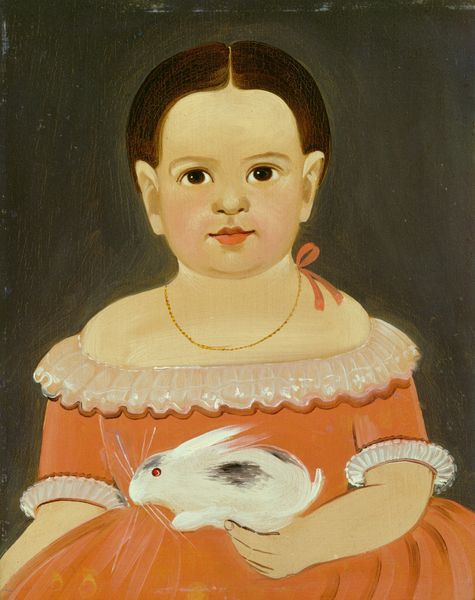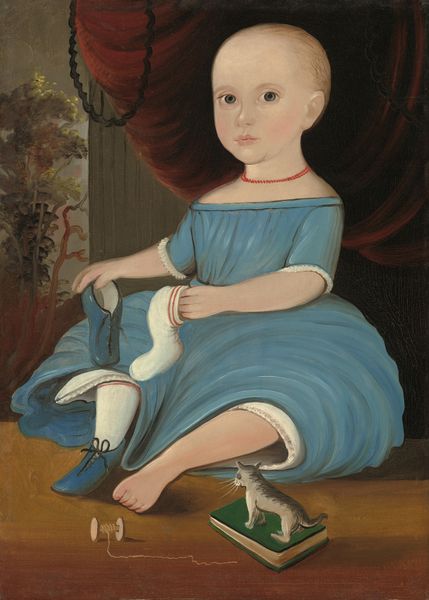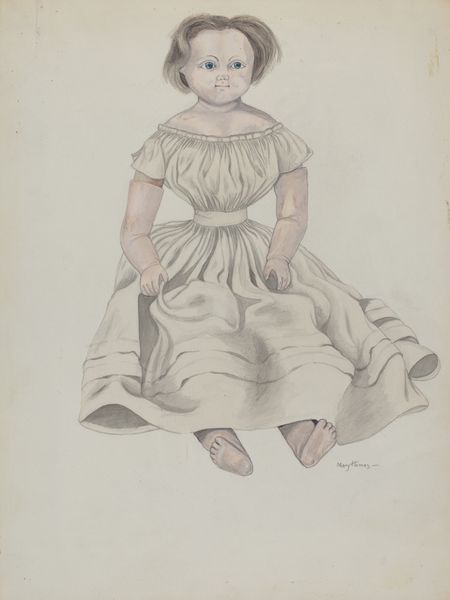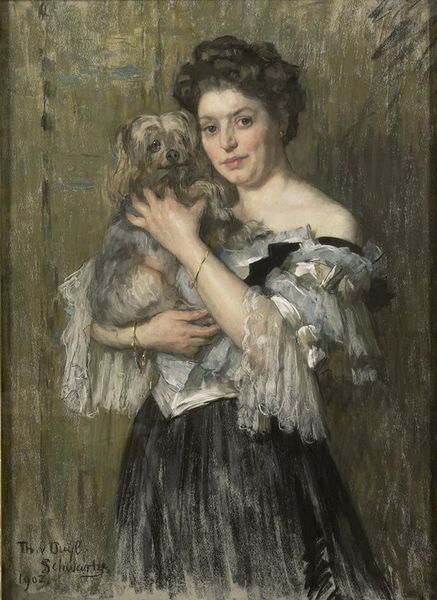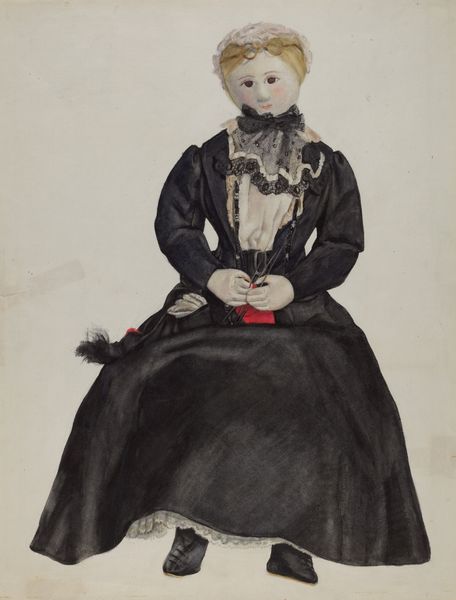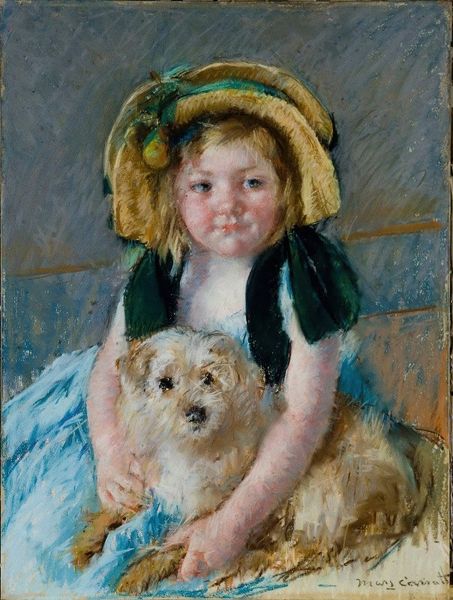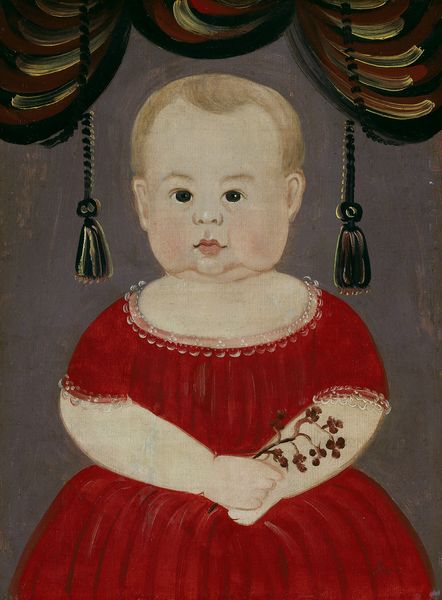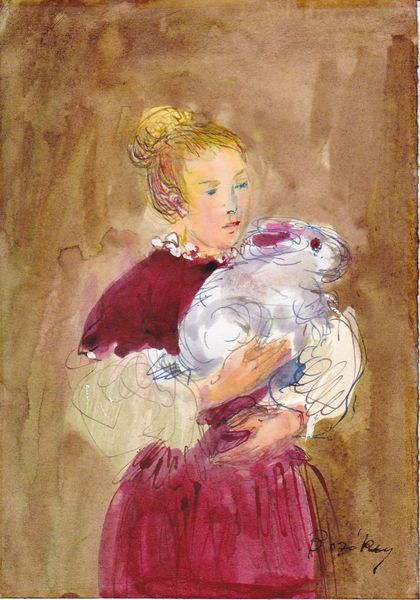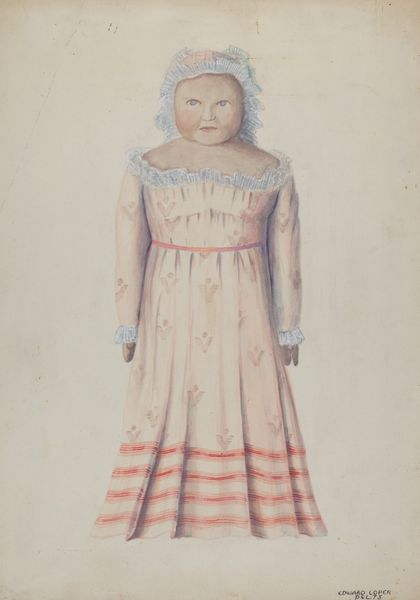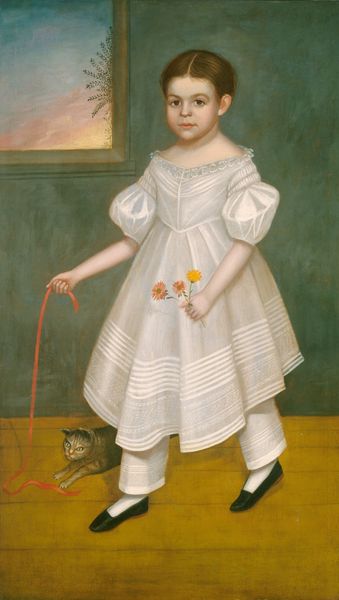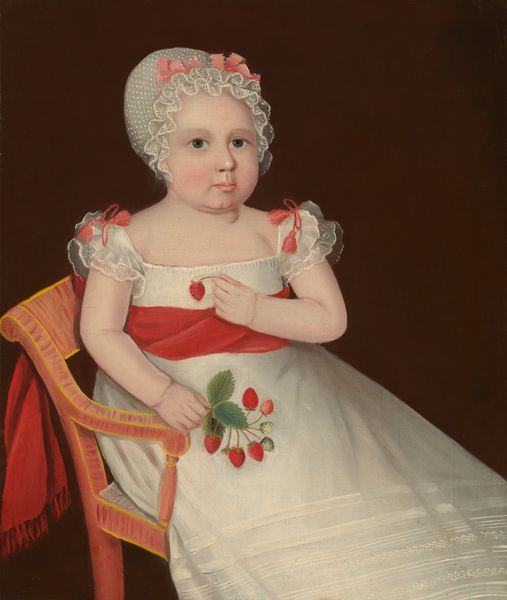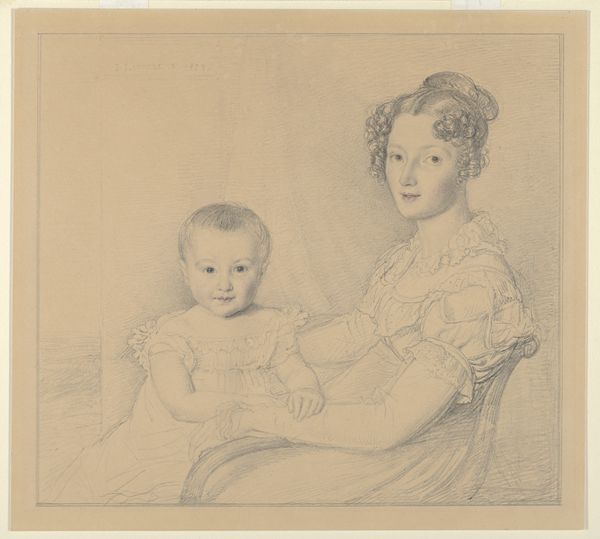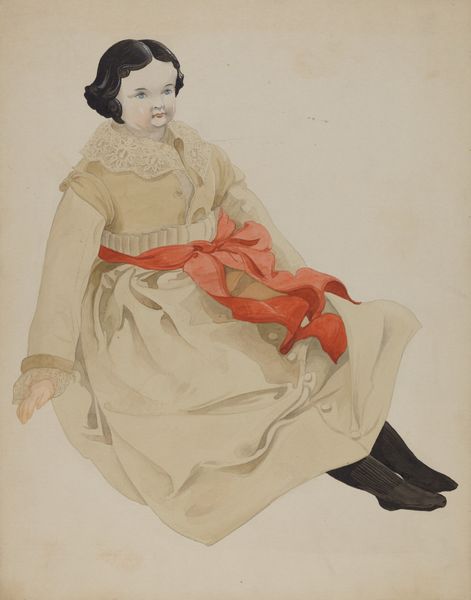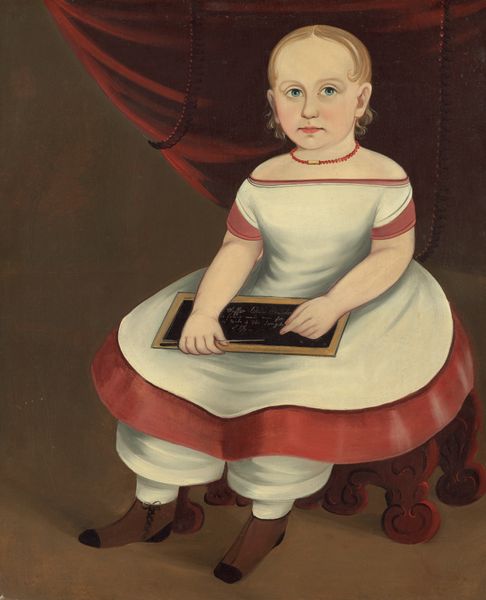
drawing, watercolor
#
portrait
#
drawing
#
watercolor
#
romanticism
#
genre-painting
Dimensions: overall (approximate): 60.2 x 50.2 cm (23 11/16 x 19 3/4 in.)
Copyright: National Gallery of Art: CC0 1.0
Editor: Here we have Micah Williams’ “Child with Pet Dog,” from around 1825, rendered in watercolor. It’s so interesting – a little formal, even stiff, but then you see this sweet moment between the child and the dog. What's your take on this artwork? Curator: Well, immediately, it prompts me to think about the social function of portraiture at this time. It served less as capturing "real life" and more as presenting a constructed image of social standing. Notice the child's attire, the carefully rendered details like the lace bonnet. How does that contribute to its purpose? Editor: I guess it's supposed to show she's from a wealthy family? It's definitely not how children typically dress now! Curator: Exactly. The painting acts as a historical marker reflecting aspiration and perhaps the family's attempts to align with gentrified society. Think about the institution of the family at the time – what role did children play, and how did portraiture cement those social expectations? The dog adds an interesting wrinkle. What does it suggest about the family and the child’s position? Editor: I'm not sure, companionship, maybe? It feels very staged though. Like they put the dog in her arms, not a natural embrace. Curator: Precisely. Think of it as another prop reinforcing the ideal family image and consider what kind of dog this breed might have represented back then. It's a window into their social values and place in the community. The stiffness you noticed? Part of a constructed performance for public consumption. Editor: It’s strange to consider that so much was 'staged'. I now realize it says more about social norms than real life. Curator: Absolutely. Seeing art in its historical context allows us to recognize the public role it played. It shows the intricate web of social expectations and constructed identity that artists had to negotiate, and helps us decipher the visual language they were employing. Editor: So it becomes more like reading history through art! Thanks!
Comments
No comments
Be the first to comment and join the conversation on the ultimate creative platform.
